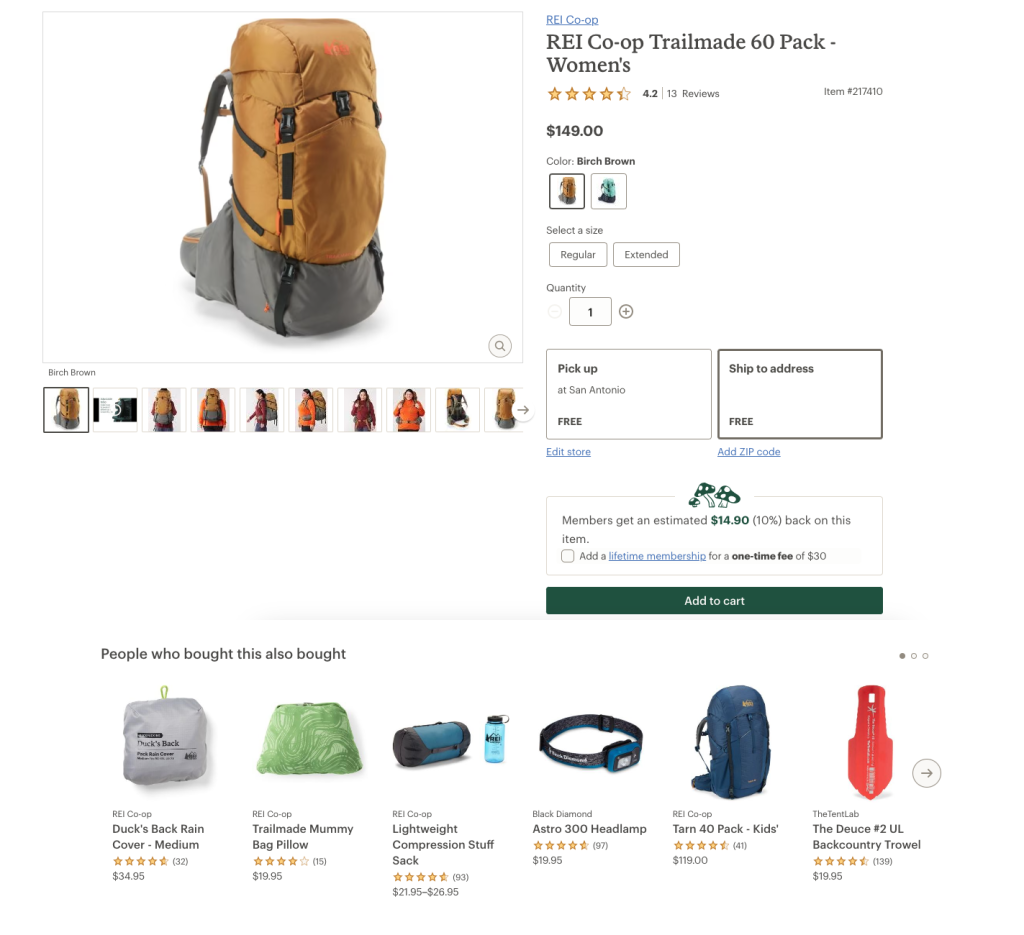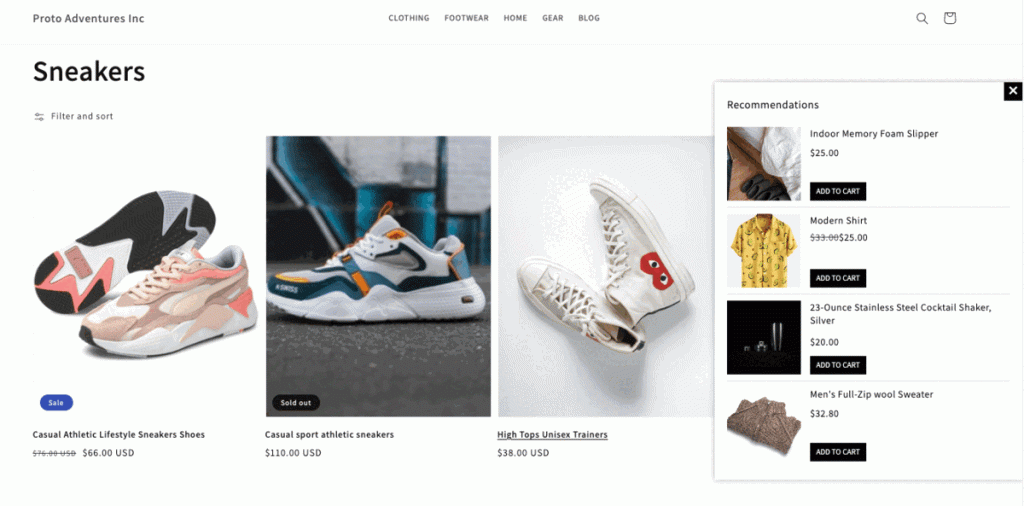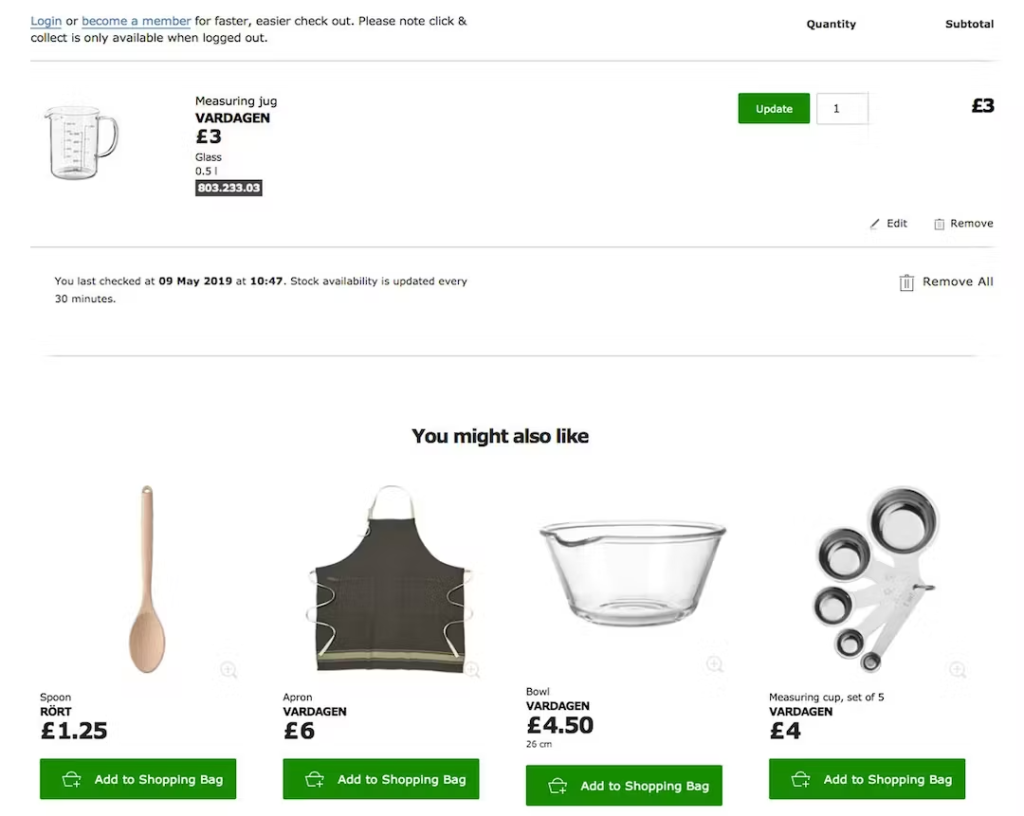In the fast-paced world of ecommerce, attempting to understand customer tendencies, buying patterns, and expectations can be daunting. The ability to cross-sell and upsell through personalized and relevant product recommendations isn’t just about boosting sales, it’s key to enhancing the customer experience.
Imagine you’re a customer, shopping online and you’ve added items that pique your interest to the cart, ready to checkout when suddenly an irrelevant product recommendation pops up. It’s like someone interrupting your conversation with something completely off-topic — frustrating, isn’t it? This is exactly why implementing relevant AI-powered recommendations is so important.
It can be difficult to predict what a customer wants or needs at any given time. But the fact is: with AI-powered product recommendations, businesses are able to personalize shopping experiences in real-time, leading to increased sales.
Power of product recommendation strategies
Having product recommendations across your site encourages customers to consider related or complementary items. For example, a laptop buyer might be offered headphones as an additional purchase. In contrast, AI-powered product recommendation engines, like Proto AI, suggest products based on real-time user behavior. The magic of this is the ability to offer personalized shopping experiences for each visitor by using AI to rely on real-time data analysis capabilities.
Take REI, their recommendations are placed across their site to give customers a personalized experience. By including complementary items to the current item and including each item price, it makes it easy for a user to add additional items they may not have seen to their purchase — ultimately increasing AOV.

Cross-selling through recommendations hinges on providing detailed information about recommended items for it to be effective. If users find themselves staring at incomplete or vague descriptions of these recommended items, they might abandon their search altogether due to confusion or frustration.
Benefits of implementing these strategies
Effectively implementing cross-sell techniques through AI-powered recommendation engines can have a number of benefits. Primarily, they help increase AOV by encouraging shoppers to add more items before checkout, this includes items frequently bought together that complement the main purchase, like the REI example. Personalization leads directly to higher conversion rates because it caters specifically to the consumer’s unique needs and preferences, improving the overall customer journey.
The power of AI is undeniable. A recent study by McKinsey revealed that 35% of Amazon’s revenue and 75% of Netflix’s product selections are driven by these smart algorithms. Proving just how influential they’ve become in shaping purchasing decisions.
Evaluating the effectiveness of recommendation design and placement
The goal is clear: Encourage additional purchases without disrupting the customer journey.
A popular example that many online marketplaces employ involves presenting product recommendations that are accessible to the customer as they browse the site — consider a scenario where other items they were previously interested in pop up next to the sneakers they’re currently looking at.

The key here is to make sure the recommendations aren’t too invasive, the ability to have them discreetly placed as they shop. It’s all about making predictions based on perceived customer interests and needs.
In addition, some companies prefer using personalized emails filled with tailored suggestions derived from browsing history or past transactions. Others leverage cutting-edge technologies like Proto AI, that focus heavily on analyzing real-time user behavior for more accurate product recommendations.
The role of UX in cross-selling cannot be overstated
A smooth user experience is the cornerstone of any prosperous ecom platform. It shapes how users interact with your site and significantly influences their buying decisions – especially when it comes to product recommendations and cross-sells. Otherwise, you risk losing customers due to frustration or confusion.
Research from the UX Design Institute shows that good UX design leads directly to increased customer satisfaction and loyalty – making it all the more crucial for online retailers looking to incorporate cross sell techniques into their business model.
Irrelevant cross-sells and customer confidence
Think back to our analogy: if someone keeps butting into conversations with unrelated comments, wouldn’t you start ignoring them after a while? That’s precisely how ‘banner blindness’ sets in for shoppers who repeatedly encounter irrelevant suggestions during their customer journey. And once they lose confidence, regaining this trust becomes exponentially harder.
You might be thinking, “So what if one or two product recommendations are out-of-place?” But remember this golden rule of retail — repeat business is key. When users find themselves bombarded by inappropriate cross-sells, they may decide not only to ignore future suggestions but may also reconsider where they shop.
A single misplaced suggestion can cast doubt over an entire recommender system’s ability to accurately understand user preferences, leading to potential loss of valuable return business. Every detail counts.
In this example from Baymard Institute Ikea’s use of alternative products and their placement in checkout. While alternatives are typically great recommendations, putting them this far into the experience may lead customers to doubt their initial purchase. Ultimately losing a customer.

Banner blindness: what’s that?
For ecommerce businesses, effective cross-selling within shopping carts is a golden opportunity. It not only streamlines the customer journey but also drives up sales. However, ‘banner blindness’ can be an obstacle.This term refers to users ignoring product recommendations due to irrelevant suggestions or past negative experiences. To overcome this challenge, your focus should be on relevance and personalization in all recommendation strategies.
Key strategies to improve the relevance of cross-sells
As an ecommerce business, you understand the potency of cross-selling. But are your product recommendations hitting the mark? Or do they lead to ‘banner blindness’, where users simply ignore these prompts due to past negative experiences?
It’s time to refine your strategy.
In a world dominated by AI-powered product recommendations and data-filtering tools, relevance is key. The more relevant your suggestions, the better the user experience for customers on their journey through your site.
Tread carefully around alternatives.
Be cautious about when and where to recommend alternative products. The right alternative at the right moment could save a sale if an item is out-of-stock or beyond the budget range. However, it’s crucial not to divert customers from their original choices without good reason — this requires understanding real-time user behavior patterns, which solutions like Proto AI excel in providing insights into.
Importance of product recommendations to boost sales and conversion
The importance of cross-sell recommendations can’t be overstated. They streamline the shopping experience and enhance customer satisfaction. Effective cross-selling requires high-quality thumbnails, complete product titles, and visible prices. Helping customers make informed decisions quickly and easily.
Lack of these attributes can lead to missed sales opportunities. It’s about supplying your clients with all the data they require immediately accessible. Incorporating additional details like brand name or available variations further improves the evaluation process for shoppers — it’s all about enhancing that customer journey. If you’re ready to leverage AI for personalized product recommendations and drive ecommerce revenue, consider Proto AI. Learn how we use real-time user behavior to make smarter business decisions.

